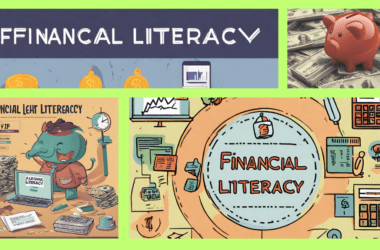Introduction
In the complex realm of personal finance, understanding the nuances between short-term and long-term savings is crucial. This article aims to demystify these concepts, shedding light on their characteristics, benefits, challenges, and strategies for effective management.
Characteristics of Short-Term Savings
Short-term savings serve immediate needs, providing liquidity and accessibility. Examples include saving for a vacation, purchasing a new gadget, or creating an emergency fund for unexpected expenses.
Characteristics of Long-Term Savings
Contrastingly, long-term savings are geared towards goals that require substantial amounts of money over an extended period. Examples encompass retirement planning, buying a home, or funding a child’s education. These savings often involve strategic investments for wealth accumulation.
Benefits of Short-Term Savings
Short-term savings offer a safety net during emergencies, providing financial flexibility and reducing stress. The quick accessibility of funds ensures you can navigate unexpected situations without disrupting long-term financial plans.
Benefits of Long-Term Savings
Long-term savings, on the other hand, capitalize on compound interest, fostering wealth accumulation. They play a pivotal role in retirement planning and financing significant life events, contributing to a secure financial future.
Strategies for Effective Short-Term Saving
To optimize short-term savings, it’s essential to set realistic goals, create a dedicated savings account, and diligently monitor expenses. These strategies ensure that short-term goals are met without compromising long-term financial stability.
Strategies for Effective Long-Term Saving
Effective long-term saving involves understanding risk tolerance, diversifying investments, and regularly reviewing and adjusting financial plans. These strategies safeguard against market fluctuations and help maintain a disciplined approach to wealth building.
Challenges of Short-Term Saving
Despite the benefits, short-term savings face challenges such as the temptation to dip into funds for non-essential purposes. Balancing short-term and long-term goals becomes crucial, especially in the face of economic uncertainties.
Challenges of Long-Term Saving
Long-term saving encounters challenges like market fluctuations and the need for patience and discipline. Adapting to life changes, such as career shifts or unexpected expenses, requires careful consideration.
Balancing Short-Term and Long-Term Savings
A well-rounded financial plan is key to balancing short-term and long-term savings effectively. Allocating funds appropriately and reassessing goals over time ensure that both immediate and future financial needs are met.
Real-Life Examples
Illustrative case studies will showcase individuals successfully managing both short-term and long-term savings. Common mistakes to avoid will also be explored, providing practical insights for readers.
Expert Advice
Financial advisors will share perspectives on short-term and long-term savings, offering tips for optimizing savings strategies. Their insights will guide readers in making informed decisions aligned with their financial goals.
Interactive Tools and Apps
The article will feature resources, including interactive tools and apps, that aid in goal setting and financial planning. Technology’s role in managing savings effectively will be emphasized.
Conclusion
In conclusion, mastering the art of differentiating short-term and long-term savings is paramount for financial success. By understanding the characteristics, benefits, and challenges of each, individuals can tailor their savings strategies to achieve both immediate and future financial goals.
FAQs
- How much should I allocate to short-term savings?
- What’s the ideal investment portfolio for long-term savings?
- Can short-term savings be used for investment?
- How often should I review my financial plan?
- What are some common mistakes to avoid in savings?

